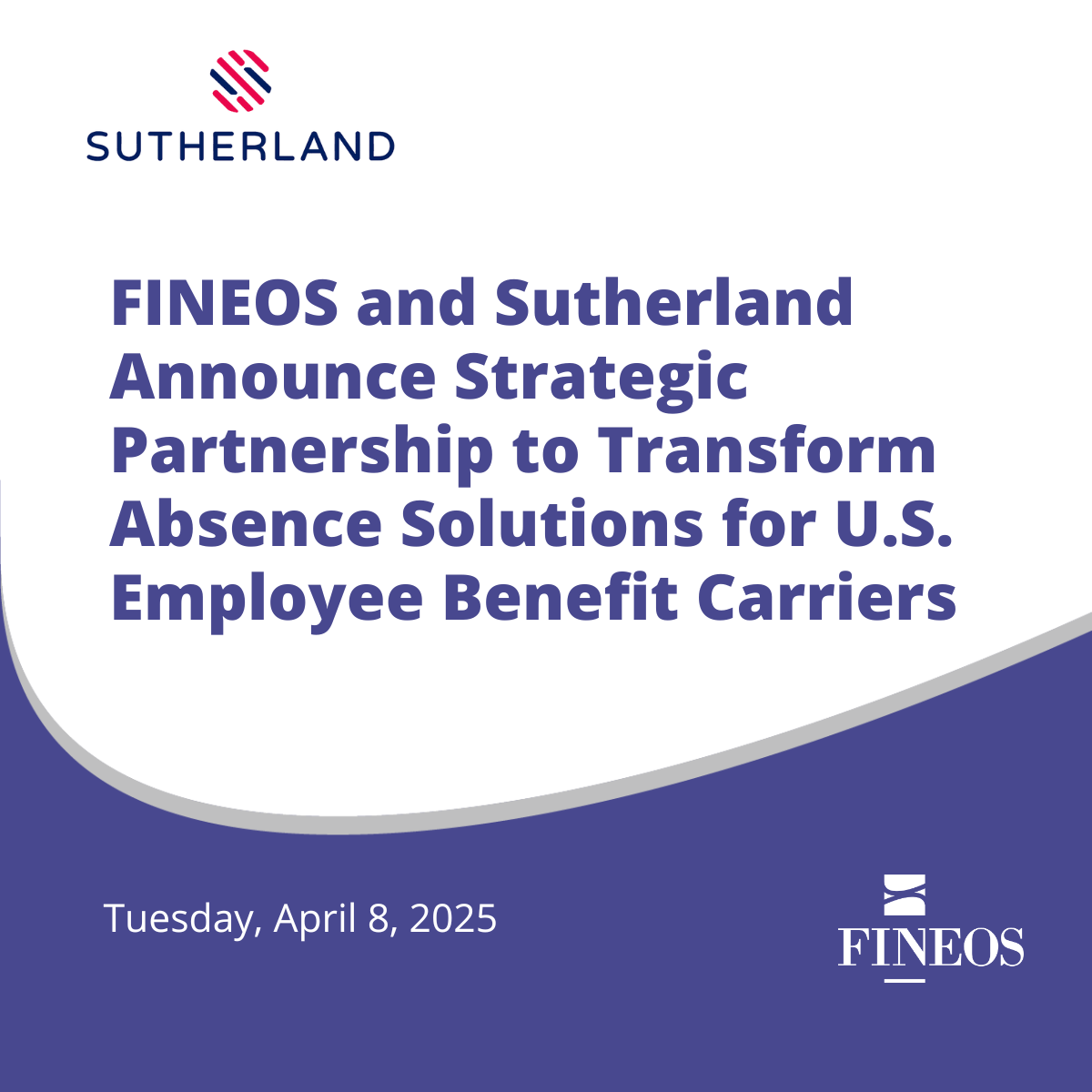Original Article Appeared in Toolbox Tech, April 2022
Debating its value is a waste of time. It is not a question as to whether or not AI should be implemented. It is more about when.
Artificial intelligence (AI) has made its way into the day-to-day operations of most organizations and is increasingly being used to facilitate employee benefits enrollment and service delivery. Santoash Rajaram, SVP, FINEOS Engage and Insight, explores the readiness of group and voluntary providers to embrace and make the most of AI offerings.
Because of its ability to process large amounts of data and perform tasks associated with the intellectual processes commonly regarded as human such as the ability to reason and learn from past experiences, AI has made inroads into all aspects of our lives. Debating its value is a waste of time. It is not a question as to whether or not AI should be implemented. It is more about when.
The Pandemic Spurs Digital Transformation
Experiences with the pandemic and what is now known as “The Great Resignation” challenge the C-Suite in ways that few could have predicted. In 2021, over 47 million people voluntarily quit their jobs, causing the biggest labor shortage since WWII. Employers are doing everything they can to compete for talent and are increasingly using benefits to accommodate the diverse needs of five generations in the workplace. Understanding what employers, sponsors, and plan participants find appealing is necessary for benefit packages to be key differentiators in today’s competitive labor market.
The pandemic forced several organizations to accelerate their digital strategies. It also sheds light on how technologies, such as AI could be used to improve performance. They are also more willing to embed their capabilities into their organizations. According to Deloitte, 74% of insurance executives planned to increase their investment in AI in 2022 to improve the overall customer experience and increase productivity. Because it enables the analysis and processing of large amounts of data at a fraction of the cost, it would take humans to do and its ability to reason and learn from its past experiences, AI has made its way into the day-to-day operations.
AI & ML Revolutionizes Employee Benefits
Benefits enrollment is daunting for most. There may not be enough benefits administrators available during open registration to answer employees’ questions and guide them through the benefits selection process. Next-generation chatbots embedded with predictive analytics, machine learning and natural language processing can interpret the intent behind employees’ requests and automatically provide the correct answers to their questions.
This helps employees navigate the complexities of the employee benefits landscape. It allows benefits administrators to increase their productivity by easing the administrative burden of answering questions during enrollment and performing routine automated tasks. By automating routine and mundane tasks, AI-enabled workflows are also helping to increase job satisfaction because people are spending their time on more exciting work. In addition to chatbots on the front end, there are AI-enabled tools that allow carriers to receive data files in any format and convert them into standardized formats. This simplifies enrollment processing and reduces the need for enrollment specialists to perform data conversions, which most consider non-value added, but necessary work.
Organizations are extending AI-enabled predictive analytics and machine learning capabilities across the business to make better decisions and reduce costs. Employee benefits are no exception. With analytical tools that are easy to learn and use, benefits managers can now obtain the data they need in real-time to perform analysis that was once left to actuaries and data scientists. This allows managers to pay closer attention to the most critical performance indicators and initiate immediate action when warranted. With easier access to internal and external data, benefits managers can respond faster to the changing benefit needs of individuals and their families. Comparing company data to industry trends also helps organizations better understand if their benefits packages are competitive and if additional options are required to attract and retain talent in the markets they serve.
Driving Value and Profitability with AI Capabilities
Platforms with AI capabilities can help companies maximize the value of the benefits they provide and reduce costs. Machine learning technologies can dig deeper into the drivers of participation and profitability. It can be used to quickly analyze enormous amounts of data from multiple and disparate sources to identify patterns in behavior that would be cost and time prohibitive for most people to perform. With a deeper understanding of participation rates across benefit offerings, generations and demographics, benefits managers can have more confidence in factors that drive participation and profitability within their organization. This understanding helps shed light on what employees value and where the greatest opportunities for cross-selling, employee training and benefit innovations lie. Although AI-enabled insights help the company better serve the needs of employees, they can also raise ethical concerns over privacy and using information without permission. Having transparency around the use of data and strong data governance practices is necessary to leverage the capabilities that AI-enabled analysis can produce.
Predictive Analytics & Machine Learning in Insurance
By analyzing past behaviors, predictive analytics can anticipate what a user is likely to do next. For example, by analyzing website behaviors during enrollment periods, predictive analytics technologies can suggest additional products that employees should consider or provide additional resources that can help inform their decisions. With machine learning embedded, intelligent workflows can help product teams make data-driven decisions and take the following steps.
Machine learning is gaining traction among employee benefits providers for several reasons: its ability to quickly analyze large amounts of data that comes from many sources and formats, its ability to quickly perform routine and mundane tasks and its ability to learn from the data it analyzes without being told to do so specifically. Machine learning helps organizations automate and continuously improve workflows by better understanding the data it has and learning from the decisions made in the past. By reviewing inquiries from the past, machine learning can extend its range of responses to increase accuracy and reduce the time and cost it takes to resolve issues.
Leveraging AI & ML to Deliver Better Benefits Experiences
Most employee benefits providers have digital benefit platforms and 24×7 self-service portals to streamline the benefits experience and provide answers to questions. To differentiate in today’s competitive markets, they will need more. They will need better insights, faster responses, and the ability to keep abreast of change. AI technologies can help provide this. Today’s leaders recognize the power AI can bring to their organizations and are rapidly adopting it within their organizations. Yet, according to a study by MIT and the Boston Consulting Group, only one in ten companies are receiving significant returns on their investments. The research suggested that if organizations are willing to learn and apply AI’s insights, they can increase their benefits realization by as much as 73%.
To get the most out of investments in AI, companies need to ensure they have a solid foundation in their data and infrastructure. They need to be willing to incorporate AI into their business processes and apply it broadly. And they need to be willing to invest in creating a culture that values collaboration and learning from each other and the insights derived from AI. The most successful implementations of AI require a strong commitment throughout the business to use AI and recognize that the more human interaction and business knowledge that goes into the AI models, the greater the chance of success. Leaders need to understand they are not just committing to another IT project. Instead, they commit to the AI journey that will evolve and adapt over time. Without this commitment and understanding, AI will be like any underutilized technology that failed to live up to the hype.


